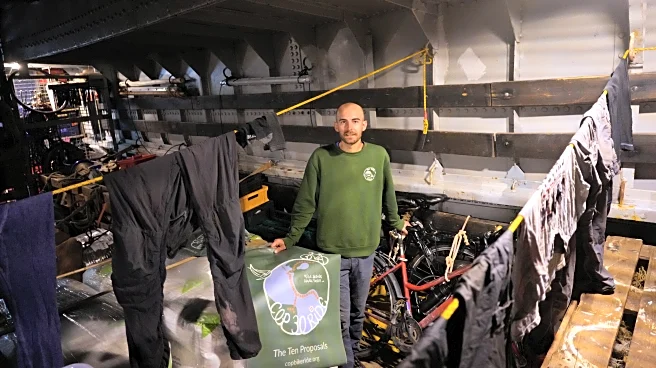What's Happening?
Estudio Escarlate, a production company, has introduced the Sustainable Audiovisual Manual at Rio Fest in Rio de Janeiro, Brazil. This digital book, sponsored by the Brazilian Tourism Board (Embratur), provides comprehensive guidelines to minimize the environmental impact of audiovisual productions. The manual covers various themes such as biodiversity, energy, greenhouse gas emissions, water, waste, social, and governance, offering practical strategies and monitoring indicators. The initiative is part of the Chico Vive project, which includes the production of a documentary and biopic about Chico Mendes, a renowned Brazilian environmental leader. These productions will be the first in Brazil to adopt the manual's sustainability parameters.
Why It's Important?
The launch of the Sustainable Audiovisual Manual signifies a significant step towards integrating environmental responsibility within the audiovisual industry. By aligning with international sustainability standards, Brazil positions itself as a leader in promoting eco-friendly practices in media production. This initiative not only supports environmental preservation but also enhances the country's cultural and tourism sectors, as highlighted by Embratur CEO Marcelo Freixo. The manual's adoption could lead to broader industry changes, encouraging other countries to implement similar practices, thereby reducing the global environmental footprint of media productions.
What's Next?
The Sustainable Audiovisual Manual is expected to influence future productions in Brazil, starting with the Chico Vive project. As Brazil prepares to host COP30, the United Nations Climate Change Conference, the manual's principles may gain further attention and adoption. The Rio Fest's COP30 Special section, featuring films and discussions on climate justice and environmental preservation, will likely foster dialogue and collaboration among industry professionals and activists. This could lead to increased awareness and action towards sustainable practices in the audiovisual sector globally.
Beyond the Headlines
The manual's introduction highlights the growing intersection between culture and environmental responsibility. It underscores the potential for media to drive social and environmental transformation, particularly in regions like the Amazon. The focus on sustainability in media production may also influence public perception and behavior, encouraging audiences to consider the environmental impact of their entertainment choices. Additionally, the manual could serve as a model for other industries seeking to integrate sustainability into their operations.













